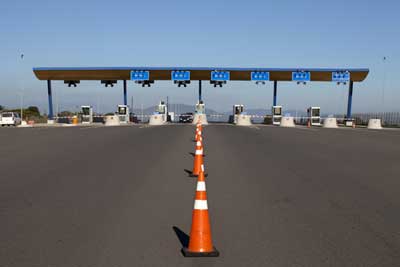
The reality is that High Occupancy Toll (HOT) lanes are exclusive – by design. If the so-called “Lexus Lanes” weren’t exclusive, they wouldn’t be hot.
Anyone who’s ever driven in urban America has had the experience of waiting in a long line of stopped traffic while some jerk who thought he was too important to wait in line with everybody else whizzed by on the shoulder.
Well, on many roads that jerk can now do so legally.
All around the country High Occupancy Vehicle (HOV) lanes are being turned into High Occupancy Toll (HOT) lanes, or other premium-pay “Lexus Lanes,” dedicated to the driver of taste and discernment.
According to the Los Angeles County Metropolitan Transportation Authority, at least nine states now have HOT lanes: California, Colorado, Florida, Georgia, Minnesota, Texas, Utah and Washington. Next on the list is Virginia, with HOT lanes due to open in December.
For those of us who usually drive alone, HOV lanes may be annoying, but at least they have the feeling of a good cause. They’re meant to promote carpooling, to reduce the number of cars on the road and ultimately to save the planet. They may in fact accomplish none of these noble goals, but the thought counts for something.
The new HOT lanes, on the other hand, serve one – and only one – obvious and transparent goal: They let rich people drive faster – for a price.
For $2 or $4 – or, in Virginia, as much as $20 – a trip, you can commute to work in style. A few thousand dollars a year on the EZ Pass is a small price to pay to avoid the riff-raff. If you think a few thousand dollars a year is a lot of money, the HOT lanes aren’t for you.
Of course, HOT lane promoters don’t see them as exclusive. Just about every book, report, op-ed, or government web site written in favor of HOT lanes uses the same example to describe who might use them: A mother who is running late to pick up her child from child care. That’s right, HOT lanes are really nothing more than late-mommy lanes.
This argument beggars belief. Do we really need to spend hundreds of millions of dollars (per road) and inconvenience hundreds of thousands of ordinary commuters (per road) just to make way for people who are running late to pick up their kids? Couldn’t they just leave a little earlier? Police escorts for late parents would be less expensive and less disruptive.
The reality is that HOT lanes are exclusive – by design. If they weren’t exclusive, they wouldn’t be hot. The price has to be high enough to convince most people to sit in traffic instead, or they wouldn’t work.
I find HOT lanes deeply offensive, and I no longer own a car. I don’t even live in the United States anymore. But as an American I’m downright angry at the idea that people can pay for the privilege of jumping ahead while others wait in line.
And I’m not alone. Pollster Matt Towery said of the Georgia HOT lanes: “This is the most hated concept probably ever created in the history of government.” His data showed that only 4 percent of Atlanta voters are in favor. We can probably guess which 4 percent.
I’m not against getting rid of HOV lanes. Despite their good intentions, they probably don’t do much good.
I’m not against building toll roads. Love it or hate it, the New Jersey Turnpike has been an American icon for more than 60 years.
But I am against the creation of two-track roads where those who are able and willing to pay can leave everyone else in their dust.
I think most of my fellow Americans are too.